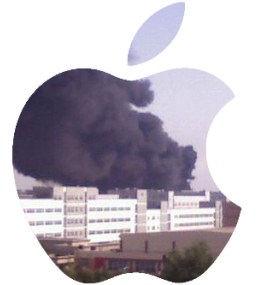The Fair Labor Association has concluded its month-long investigation of Chinese manufacturer Foxconn’s factory conditions, and as they indicated early on, they have encountered “significant issues,” though it’s far from the sub-Dickensian hellhole many perhaps expected. They have focused on a few of the most significant problems and made some suggestions as to how to remedy them.
Ultimately these solutions will need to be monitored by Chinese authorities — the same authorities under which the previous, nominally illegal excesses of Foxconn’s were swept under the rug. But with the eye of the world upon them, it may be that even the most lax of regulators will have to make an effort to keep their industry in line with the laws that ostensibly bind them.
The investigators looked into three factories over a month, talking with leadership and surveying 35,500 workers. It’s only a fraction of Foxconn’s dozens of factories and 1.2 million employees, but it was apparently enough to derive some systematic failings. The press release summarizing the FLA’s findings and suggestions is here, but for your convenience they are further summarized in bullet form below.
- All three factories exceeded weekly and monthly overtime limits and used worker-unfriendly overtime calculation. Foxconn agreed to bring working hours down from an average of over 60 hours a week during peak production periods to the legal maximum of 49, including overtime. Unscheduled overtime was calculated in half-hour increments, rounding down, a measurement style which will also change. They will also improve pay so that the reduced hours do not result in financial problems for employees.
- 64 percent of employees said that compensation does not meet their basic needs. The FLA will conduct an assessment of the cost of living in Shenzhen and Chengdu to determine the validity of these claims. Foxconn also agreed to look into low enrollment in social security benefit programs.
- A number of simple safety precautions were not being taken, such as protective equipment, permits, and ensuring a safe exit. Many of these problems were remedied immediately, and the FLA noted that Foxconn had in fact improved “operating procedures, measurement, and documentation” related to the facilities where aluminum dust (which is dangerous and inflammable) must be managed.
- More systematic safety issues were noted, such as high rates of unreported accidents. Foxconn will immediately require accidents to be reported if they result in an injury, rather than if production is stopped, which was the previous criterion.
- Workers were not adequately represented in management. Foxconn agreed to improve the election of worker representatives, as required by local law. Workers will also be consulted more in issues of safety and health.
Curious readers can download the entire report here, including data and methodology.
The investigation has focused on the parts of Foxconn that have served as suppliers to Apple, but it is to be hoped that the changes suggested will be adopted more widely, though it may take time for them to propagate through so large and international an entity.
Apple CEO Tim Cook is in China at the time of this report coming out, which surely is not a coincidence. His televised meetings with higher-ups and tours of Chinese Apple Stores are likely just window-dressing, however, and the meat of his visit will be in private meetings with the leaders of China’s manufacturing industry. The results of these meetings, in which the FLA’s findings will no doubt be discussed, will probably be announced by Apple once its suppliers have had some time to make the changes suggested.
